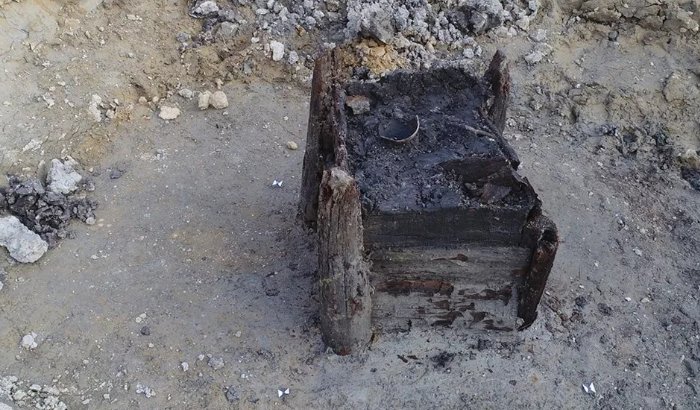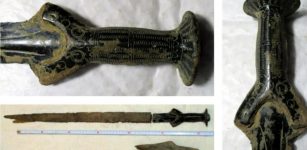Czech Neolithic Well Is Oldest Wooden Structure In The World
Jan Bartek - AncientPages.com - The world's oldest wooden structure was recently unearthed in Eastern Bohemia in the Czech Republic. It shows that Neolithic peoples were capable of more sophisticated construction techniques than previously assumed.
It is remarkable that the first farmers, who only had tools made of stone, bone, horn or wood, were able to finish the surface of the felled logs with precision.
 The oldest archaeological wooden construction - dated. Image credit: source
The oldest archaeological wooden construction - dated. Image credit: source
Along with the wooden structure (an ancient well made out of oak), they also found the corner posts, slabs, and grooves of a millennium-old fountain. The well was found during excavating near the construction site of the new D35 motorway around the town of Ostrov in the Pardubice region, in the Czech Republic.
Already then experts were suggesting that it may be the oldest wooden structure ever discovered in Europe.
"The well is over 7000 years old and has been preserved thanks to the high groundwater level. However, it is not the oldest well in the world, but the oldest well-dated by this method," says Michal Rybníček from the Department of Wood Science and Technology of Mendel University in Brno.
Scientists from the Mendel University in Brno, examined the well (or a fountain) using both radio-carbon dating and the scientific method of the so-called tree-ring dating (also called growth rings) that reveals the exact year they were formed.
These two methods significantly narrowed down the age to either 5,256 or 5,255 BCE.
The well was already discovered in 2018 along with seven other wells from different parts of prehistoric times. The first findings of ceramics showed that the well at Ostrov comes from a period of culture with linear ceramics (dated to the younger Stone Age).
The unique discovery gave the opportunity to pick up the entire well in one block, according to the archaeologists.
See also:
Incredible Mammoth Ivory Male Head From Dolni Vestonice, Czech Dated To 26,000 BC
Did Neanderthals And Modern Humans Meet In The Czech Republic 50,000 Years Ago?
7,000-Year-Old Unique Lipnik Idol Statuette Unearthed In Moravian Gate Valley, Czech Republic
"It was a technically and logistically demanding event. This was followed by careful preparation of the individual layers and the dismantling of the wooden structure, "said Jaroslav Peška from the Archaeological Center Olomouc.
Peška also said that the structure managed to survive for so long because the surrounding conditions were perfect.
“When blessed by such conditions - wetness and lack of oxygen – oak almost gets fossilised. It becomes very hard and durable wood. This is what happened in our case and is the reason why it was so well preserved."
Czech Radio reports that the well has the shape of a block, which is 140cm high and has a square-shaped top where each side measures 80cm. When it was found, four wooden stakes made up the corners of the structure, with planks being placed in their grooves.
It is a building technique that archaeologists had previously assumed only appeared later, during the Bronze Age.
“It is a technique that we previously had no evidence for from the Neolithic era. However, now we have two examples that prove it was known and used. One is from this find in Ostrov.
"The other is from Uničov in Moravia, where the well is about 160 years younger, but it was made by the same culture.”
See also: More Archaeology News
The builders of the wells were people belonging to the so-called Linear Pottery culture, the first farmers who settled in Central Europe during the sixth millennium BCE. They built long, timber dwellings, sometimes up to 45m long, and they were the first on the territory to incorporate ceramic vessels into their earthenware.
After the research is completed, the well should become part of the exposition of the Pardubice Museum within about two years.
Written by Jan Bartek - AncientPages.com Staff Writer
Expand for references




















